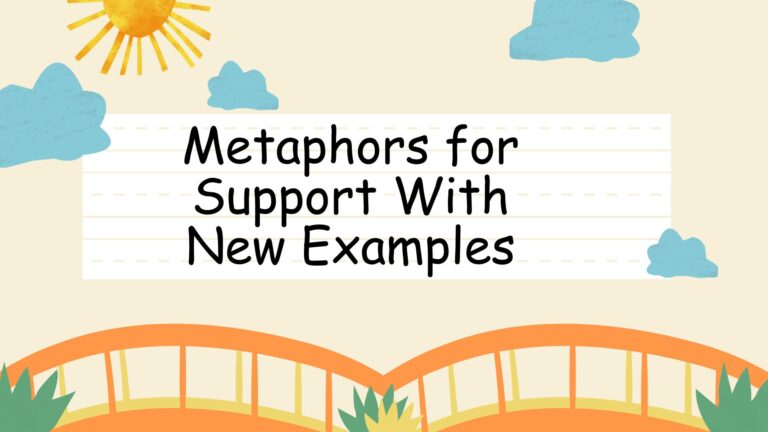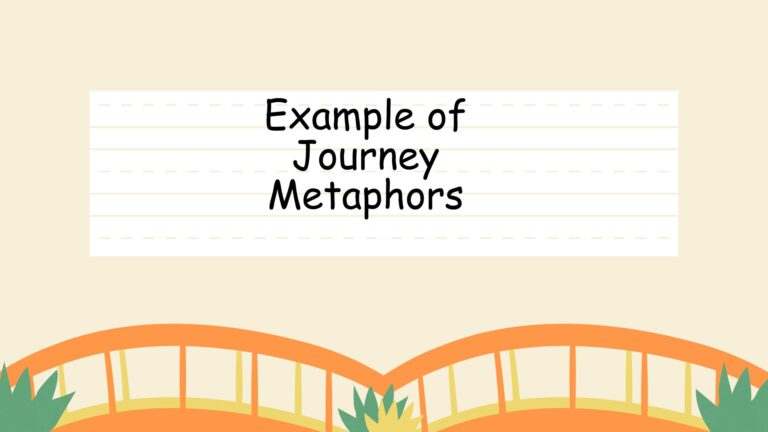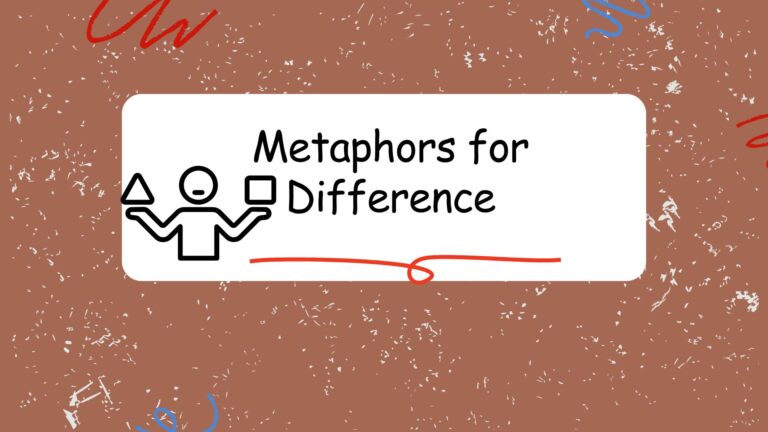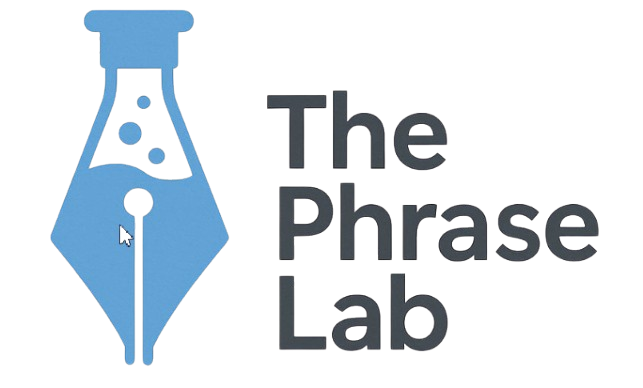
60+ Metaphors for Frustration: Both Common and Uncommon
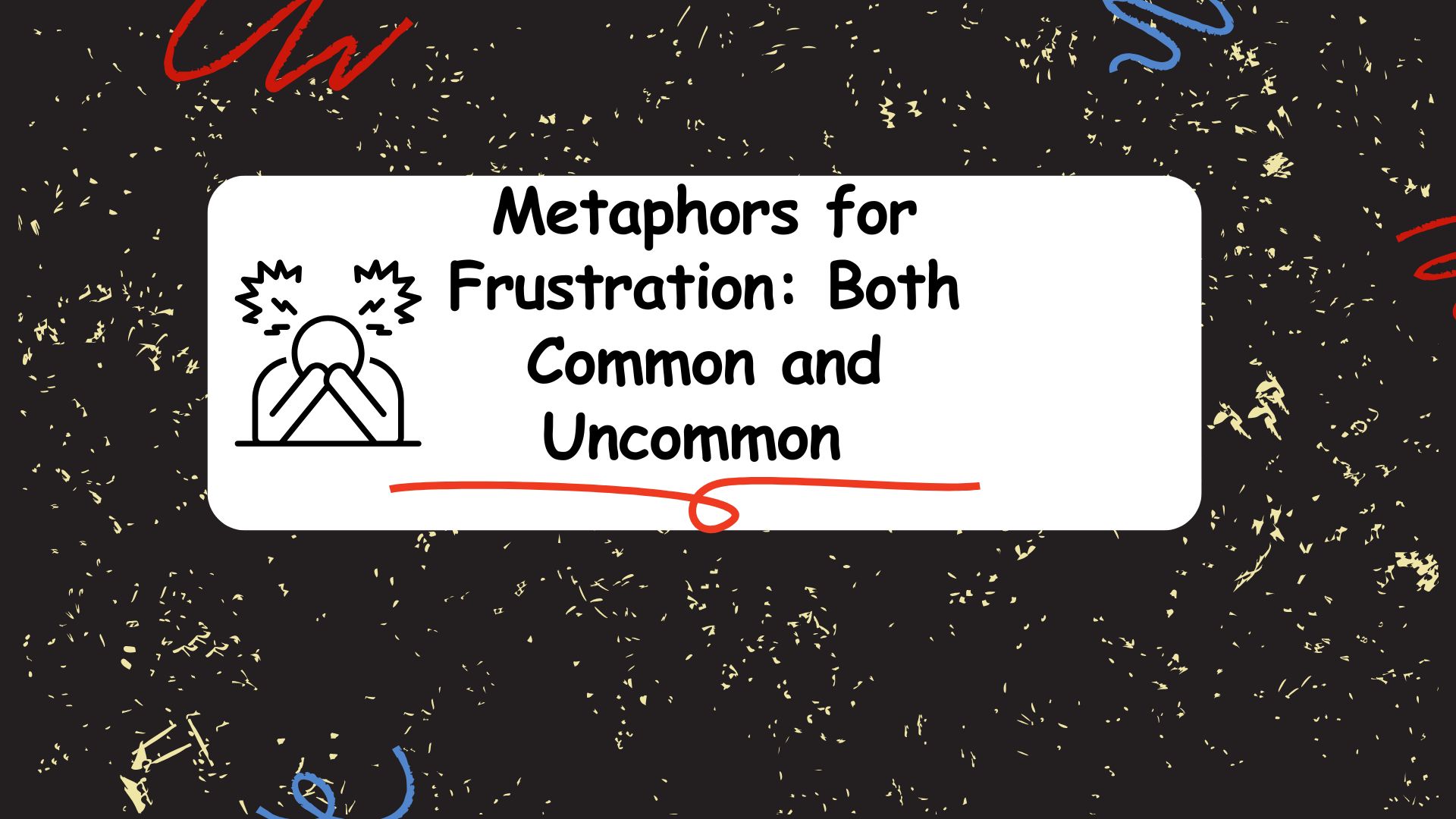
Understanding metaphors for frustration is crucial for mastering nuanced English communication. Frustration, a common human emotion, is often expressed through figurative language to add impact and vividness to our speech. This article delves into the world of metaphors used to describe frustration, exploring their various types, structural elements, and usage rules. By understanding these metaphors, English learners can enhance their comprehension, express themselves more effectively, and avoid common pitfalls. This guide is beneficial for ESL/EFL students, writers, and anyone looking to enrich their vocabulary and improve their command of the English language.
Table of Contents
- Introduction
- Definition of Metaphor for Frustration
- Structural Breakdown
- Types and Categories of Frustration Metaphors
- Examples of Frustration Metaphors
- Usage Rules for Frustration Metaphors
- Common Mistakes with Frustration Metaphors
- Practice Exercises
- Advanced Topics
- FAQ
- Conclusion
Definition of Metaphor for Frustration
A metaphor for frustration is a figure of speech that describes the feeling of being annoyed, irritated, or discouraged by comparing it to something else that shares similar characteristics. It allows us to express complex emotions in a more vivid and relatable way, using imagery and association rather than literal descriptions. Metaphors are essential in English because they add color, depth, and emotional resonance to communication.
In essence, a metaphor works by asserting that one thing *is* another, implying a similarity or shared quality. When discussing frustration, these metaphors often draw upon experiences like physical strain, being trapped, or facing insurmountable obstacles. This allows the speaker to convey the intensity and nature of their frustration without explicitly stating “I am frustrated.” The use of metaphors provides a more engaging and impactful way to communicate feelings of frustration effectively.
Structural Breakdown
The structure of a metaphor typically involves two key elements: the tenor and the vehicle. The tenor is the subject being described (in this case, frustration), and the vehicle is the object or concept used to represent it. The connection between the tenor and the vehicle is based on shared characteristics or associations.
For example, in the metaphor “I’m banging my head against a brick wall,” the tenor is the speaker’s frustration, and the vehicle is the act of banging one’s head against a brick wall. The shared characteristic is the feeling of futility and the lack of progress. Understanding this structure helps in both interpreting and constructing effective metaphors for expressing frustration.
Effective metaphors often rely on implication and suggestion rather than explicit comparison. The power of a metaphor lies in its ability to evoke a strong image or feeling in the listener’s mind, allowing them to connect with the speaker’s experience on an emotional level. By understanding the structural elements, one can create more impactful and relatable metaphorical expressions of frustration.
Types and Categories of Frustration Metaphors
Metaphors for frustration can be categorized based on the type of imagery they evoke. Here are some common categories:
Physical Burden Metaphors
These metaphors compare frustration to carrying a heavy load or enduring physical strain. They highlight the feeling of being weighed down or overwhelmed.
Containment and Pressure Metaphors
These metaphors describe frustration as being trapped or under immense pressure, like a container about to burst. They emphasize the feeling of being confined and unable to escape the source of frustration.
Impediment and Obstacle Metaphors
These metaphors portray frustration as encountering insurmountable obstacles or roadblocks. They focus on the feeling of being blocked from achieving a goal or making progress.
Bodily Discomfort Metaphors
These metaphors link frustration to physical discomfort or pain, such as a persistent ache or irritation. They underscore the unpleasant and distracting nature of frustration.
Aggression and Violence Metaphors
These metaphors express frustration as a form of aggression, either directed inward or outward. They convey a sense of anger and the urge to lash out.
Examples of Frustration Metaphors
Below are examples of metaphors for frustration, categorized according to the types discussed above. Each table provides various examples to illustrate the diverse ways frustration can be expressed figuratively.
Table 1: Physical Burden Metaphors
This table illustrates metaphors that describe frustration as a physical burden, highlighting the feeling of being weighed down or overwhelmed.
| Metaphor | Explanation |
|---|---|
| I’m carrying the weight of the world on my shoulders. | Feeling responsible for everything and overwhelmed by problems. |
| This is a heavy cross to bear. | Enduring a difficult or painful situation. |
| I’m drowning in paperwork. | Being overwhelmed by administrative tasks and responsibilities. |
| It’s like climbing a never-ending mountain. | Facing a challenge that seems impossible to overcome. |
| I feel like I’m dragging my feet through mud. | Making slow progress due to obstacles or discouragement. |
| I’m carrying a ton of bricks. | Bearing a heavy emotional or mental burden. |
| This is a load off my mind. | A temporary relief from a frustrating task. |
| I have too much on my plate. | Feeling overwhelmed by numerous responsibilities. |
| I’m swamped with work. | Being extremely busy and unable to handle the workload. |
| It’s a crushing blow. | Experiencing a major setback or disappointment. |
| I’m sinking under the pressure. | Feeling like you’re failing due to stress. |
| This problem is a real albatross around my neck. | An annoying and persistent obstacle that is always present. |
| I’m shouldering a great responsibility. | Feeling responsible for everything and overwhelmed by problems. |
| It feels like I’m pushing a boulder uphill. | Facing a challenge that seems impossible to overcome. |
| The work is a millstone around my neck. | An annoying and persistent obstacle that is always present. |
| My patience is wearing thin. | Feeling close to losing your temper because of something. |
| I’m weighed down by all the issues. | Being extremely busy and unable to handle the workload. |
| It’s a burden I can barely manage. | Enduring a difficult or painful situation. |
| I’m buried under a mountain of tasks. | Being overwhelmed by administrative tasks and responsibilities. |
| This challenge feels like an insurmountable weight. | Bearing a heavy emotional or mental burden. |
| I’m drowning in a sea of troubles. | Feeling responsible for everything and overwhelmed by problems. |
| It’s like carrying a lead weight in my heart. | Enduring a difficult or painful situation. |
| I’m struggling to keep my head above water. | Being extremely busy and unable to handle the workload. |

Table 2: Containment and Pressure Metaphors
This table presents metaphors that liken frustration to being contained or under pressure, emphasizing feelings of confinement and the urge to escape.
| Metaphor | Explanation |
|---|---|
| I’m at the end of my rope. | Reaching the limit of one’s patience or endurance. |
| I’m feeling trapped. | Feeling confined and unable to escape a difficult situation. |
| I’m about to explode. | Feeling extremely angry and on the verge of losing control. |
| I’m bottled up with frustration. | Suppressing feelings of anger and irritation. |
| I’m feeling the squeeze. | Experiencing pressure and stress from multiple sources. |
| I’m in a pressure cooker. | Being in a stressful environment with high expectations. |
| I’m stuck in a rut. | Feeling trapped in a monotonous and unfulfilling routine. |
| I’m cornered. | Feeling like there is no way out of a difficult situation. |
| I’m up against the wall. | Facing a difficult situation with limited options. |
| I’m in a tight spot. | Being in a difficult or precarious situation. |
| I’m bursting at the seams with frustration. | Feeling extremely angry and on the verge of losing control. |
| I’m running out of steam. | Reaching the limit of one’s patience or endurance. |
| It’s a dead end. | Feeling confined and unable to escape a difficult situation. |
| I’m in a bind. | Feeling extremely angry and on the verge of losing control. |
| I’m feeling hemmed in. | Experiencing pressure and stress from multiple sources. |
| I’m backed into a corner. | Being in a stressful environment with high expectations. |
| I’m feeling like a caged animal. | Feeling trapped in a monotonous and unfulfilling routine. |
| I’m in a no-win situation. | Feeling like there is no way out of a difficult situation. |
| I’m trapped in a vicious cycle. | Facing a difficult situation with limited options. |
| I’m in a box. | Being in a difficult or precarious situation. |
| I’m feeling like a fly in a spider web. | Feeling extremely angry and on the verge of losing control. |
| I’m cornered like a rat. | Reaching the limit of one’s patience or endurance. |
| It’s a complete gridlock. | Feeling confined and unable to escape a difficult situation. |
Table 3: Impediment and Obstacle Metaphors
This table provides metaphors that describe frustration as encountering obstacles, emphasizing the feeling of being blocked and unable to make progress.
| Metaphor | Explanation |
|---|---|
| I’m hitting a brick wall. | Encountering an insurmountable obstacle or barrier. |
| It’s like running into a roadblock. | Being stopped or delayed by an unexpected problem. |
| I’m facing an uphill battle. | Dealing with a difficult challenge that requires significant effort. |
| I’m stuck in the mud. | Being unable to make progress due to obstacles or delays. |
| It’s like banging my head against a wall. | Engaging in a futile effort with no positive results. |
| I’m spinning my wheels. | Expending effort without making any real progress. |
| I’m up against it. | Facing a challenging situation with limited resources. |
| It’s a stumbling block. | An obstacle that hinders progress or success. |
| I’m fighting a losing battle. | Engaging in a struggle that is likely to end in defeat. |
| I’m navigating a minefield. | Dealing with a situation full of potential dangers or problems. |
| I’m facing a mountain of problems. | Encountering an insurmountable obstacle or barrier. |
| It’s like wading through treacle. | Being stopped or delayed by an unexpected problem. |
| I’m hitting a snag. | Dealing with a difficult challenge that requires significant effort. |
| I’m lost in the woods. | Being unable to make progress due to obstacles or delays. |
| It’s like swimming against the tide. | Engaging in a futile effort with no positive results. |
| I’m running around in circles. | Expending effort without making any real progress. |
| I’m tripping over red tape. | Facing a challenging situation with limited resources. |
| It’s a major hurdle to overcome. | An obstacle that hinders progress or success. |
| I’m fighting an uphill climb. | Engaging in a struggle that is likely to end in defeat. |
| I’m trying to navigate a labyrinth. | Dealing with a situation full of potential dangers or problems. |
Table 4: Bodily Discomfort Metaphors
This table illustrates metaphors that describe frustration as a physical discomfort, highlighting the unpleasant and distracting nature of the emotion.
| Metaphor | Explanation |
|---|---|
| It’s a pain in the neck. | Something that is annoying and bothersome. |
| It’s like a thorn in my side. | A persistent source of irritation or annoyance. |
| It’s grating on my nerves. | Something that is irritating and makes you feel tense. |
| It’s making my blood boil. | Feeling extremely angry and agitated. |
| It’s giving me a headache. | Something that is causing mental stress and worry. |
| It’s like a knot in my stomach. | Feeling anxious or apprehensive about something. |
| It’s making my skin crawl. | Feeling disgusted or repulsed by something. |
| It’s getting under my skin. | Something that is irritating and annoying you. |
| It’s a bitter pill to swallow. | An unpleasant fact or situation that must be accepted. |
| It’s like a punch in the gut. | A sudden and unexpected shock or disappointment. |
| It’s like a bad taste in my mouth. | Something that is unpleasant or leaves a negative impression. |
| It’s like an itch I can’t scratch. | A persistent desire or urge that cannot be satisfied. |
| It’s like a constant buzzing in my ear. | Something that is constantly irritating and distracting. |
| It’s like a splinter in my finger. | A small but persistent source of irritation. |
| It’s like a toothache. | A constant and nagging source of discomfort. |
| It’s like a burn in my throat. | Something that is difficult or painful to accept. |
| It’s like a lump in my throat. | Feeling emotional and unable to speak. |
| It’s like a weight on my chest. | Feeling sad or burdened by something. |
| It’s like a chill down my spine. | Feeling frightened or uneasy. |
| It’s like pins and needles. | Feeling restless and impatient. |
Table 5: Aggression and Violence Metaphors
This table presents metaphors that express frustration as aggression, highlighting feelings of anger and the urge to lash out.
| Metaphor | Explanation |
|---|---|
| I could kill someone. | Feeling extremely angry and wanting to express it violently. |
| I’m ready to explode. | Feeling extremely angry and on the verge of losing control. |
| I’m about to snap. | Reaching the limit of one’s patience and about to lose control. |
| I’m at my breaking point. | Reaching the limit of one’s endurance and about to give up. |
| I’m tearing my hair out. | Feeling extremely frustrated and stressed. |
| I’m banging my head against the wall. | Engaging in a futile effort with no positive results. |
| I’m ready to punch something. | Feeling extremely angry and wanting to release it physically. |
| I’m seeing red. | Feeling extremely angry and losing control. |
| I’m fit to be tied. | Feeling extremely angry and agitated. |
| I’m spitting nails. | Feeling extremely angry and expressing it aggressively. |
| I’m ready to blow my top. | Feeling extremely angry and wanting to express it violently. |
| I’m about to lose it. | Feeling extremely angry and on the verge of losing control. |
| I’m on the edge. | Reaching the limit of one’s patience and about to lose control. |
| I’m at the end of my tether. | Reaching the limit of one’s endurance and about to give up. |
| I’m pulling my hair out. | Feeling extremely frustrated and stressed. |
| I’m butting my head against a brick wall. | Engaging in a futile effort with no positive results. |
| I’m ready to explode with anger. | Feeling extremely angry and wanting to release it physically. |
| I’m seeing stars. | Feeling extremely angry and losing control. |
| I’m hopping mad. | Feeling extremely angry and agitated. |
| I’m fuming. | Feeling extremely angry and expressing it aggressively. |
Usage Rules for Frustration Metaphors
Using metaphors effectively requires understanding certain rules. The primary rule is to ensure the metaphor is relevant and understandable. The connection between the tenor and the vehicle should be clear enough for the listener or reader to grasp the intended meaning. Overly obscure or complex metaphors can confuse rather than clarify.
Another important rule is to maintain consistency within the metaphor. Avoid mixing metaphors that create conflicting images or illogical associations. For example, combining “drowning in paperwork” with “climbing a mountain” could create a confusing picture.
Consider your audience. The effectiveness of a metaphor depends on the audience’s cultural background, knowledge, and experience. A metaphor that resonates with one audience may not work for another.
Common Mistakes with Frustration Metaphors
One common mistake is using clichéd metaphors. While familiar, they can lack impact and originality. Strive to find fresh and creative ways to express frustration.
Another mistake is using mixed metaphors, as mentioned earlier. This can create confusion and undermine the effectiveness of your communication. Ensure that the elements of your metaphor are logically consistent.
Finally, avoid using metaphors that are culturally insensitive or offensive. Be mindful of the connotations and associations of your metaphors, and ensure they are appropriate for your audience.
Table 6: Correct vs. Incorrect Metaphor Usage
This table shows examples of common mistakes in using frustration metaphors, along with the correct usage to illustrate the difference.
| Incorrect | Correct | Explanation |
|---|---|---|
| I’m climbing the walls with frustration, drowning in paperwork. | I’m climbing the walls with frustration. OR I’m drowning in paperwork. | Avoid mixing metaphors. Choose one that fits the context. |
| This project is a walk in the park, a real headache. | This project is a real headache. | Avoid contradictory metaphors. “Walk in the park” implies ease, while “headache” implies difficulty. |
| I’m feeling like a broken record. | I’m feeling like a broken record repeating myself. | Be specific. |
| It’s like water under the bridge, but it’s a pain in the neck. | It’s a pain in the neck. | Avoid contradicting metaphors. |
| I’m burning the candle at both ends, but I’m also stuck in the mud. | I’m burning the candle at both ends. | Avoid mixed metaphors. |
| I’m at the end of my rope, but I’m also climbing the ladder. | I’m at the end of my rope. | Avoid contradictory metaphors. |
| This problem is a double-edged sword, but it’s also a piece of cake. | This problem is a double-edged sword. | Avoid contradictory metaphors. |
| I’m between a rock and a hard place, but I’m also sitting pretty. | I’m between a rock and a hard place. | Avoid contradictory metaphors. |
| This situation is a blessing in disguise, but it’s also a thorn in my side. | This situation is a thorn in my side. | Avoid contradictory metaphors. |
| I’m caught between the devil and the deep blue sea, but I’m also on top of the world. | I’m caught between the devil and the deep blue sea. | Avoid contradictory metaphors. |
Practice Exercises
Test your understanding of metaphors for frustration with the following exercises.
Exercise 1: Identifying Metaphors
Identify the metaphors for frustration in the following sentences.
Table 7: Identifying Metaphors
| Question | Answer |
|---|---|
| 1. I’m drowning in emails today. | Drowning in emails |
| 2. This project is a real headache. | A real headache |
| 3. I feel like I’m hitting a brick wall with this problem. | Hitting a brick wall |
| 4. My patience is wearing thin. | Wearing thin |
| 5. I’m at the end of my rope with these constant delays. | At the end of my rope |
| 6. It’s like pulling teeth trying to get him to cooperate. | Pulling teeth |
| 7. I’m tied up in knots with all these regulations. | Tied up in knots |
| 8. The news was a punch in the gut. | A punch in the gut |
| 9. I’m feeling the squeeze with these budget cuts. | Feeling the squeeze |
| 10. It’s a bitter pill to swallow. | A bitter pill to swallow |
Exercise 2: Completing Metaphors
Complete the following metaphors to express frustration.
Table 8: Completing Metaphors
| Question | Answer |
|---|---|
| 1. I feel like I’m going in _____. | circles |
| 2. This situation is a _____. | minefield |
| 3. I’m banging my head against _____. | a brick wall |
| 4. It’s like wading through _____. | treacle |
| 5. I’m carrying the _____ on my shoulders. | weight of the world |
| 6. I’m feeling like a _____. | caged animal |
| 7. This is like a thorn in _____. | my side |
| 8. I’m about to _____. | explode |
| 9. It’s a _____ to swallow. | bitter pill |
| 10. This problem is a real _____. | albatross around my neck |
Exercise 3: Using Metaphors in Sentences
Write sentences using the following metaphors to express frustration.
Table 9: Using Metaphors in Sentences
| Metaphor | Example Sentence |
|---|---|
| At the end of my rope | I’m at the end of my rope with this constant technical issue. |
| Hitting a brick wall | I feel like I’m hitting a brick wall trying to get funding for this project. |
| A pain in the neck | Dealing with this customer complaint is a real pain in the neck. |
| Drowning in paperwork | I’m drowning in paperwork and can barely keep up with my other responsibilities. |
| Spinning my wheels | I feel like I’m just spinning my wheels and not making any real progress. |
| Feeling trapped | I’m feeling trapped in this job and need to find a way out. |
| About to explode | I’m about to explode if one more thing goes wrong today. |
| Wearing thin | My patience is wearing thin with these constant interruptions. |
| A bitter pill | Accepting the project’s failure was a bitter pill to swallow. |
| Up against it | We’re really up against it with this tight deadline and limited resources. |
Advanced Topics
For advanced learners, exploring the cultural and historical context of metaphors can provide deeper insights. Some metaphors may have specific origins or associations that are not immediately apparent. Additionally, analyzing the use of metaphors in literature and speeches can enhance understanding and appreciation of their rhetorical power. Consider exploring the works of authors known for their masterful use of figurative language.
Delving into the psychology of metaphors can also be beneficial. Understanding how metaphors influence perception and emotion can help in crafting more persuasive and impactful communication. Researching cognitive linguistics and metaphor theory can provide a more nuanced understanding of how metaphors work and their effect on human thought and behavior.
FAQ
Here are some frequently asked questions about metaphors for frustration:
- What is the difference between a metaphor and a simile?A metaphor directly equates two things (e.g., “He is a lion”), while a simile uses “like” or “as” to make a comparison (e.g., “He is like a lion”). Metaphors are more assertive and create a stronger sense of identification.
- How can I avoid using clichéd metaphors?Be creative and try to find unique and original ways to express your ideas. Consider the specific context and look for unusual associations. Read widely and pay attention to how other writers use figurative language.
- Is it okay to mix metaphors sometimes?Generally, it’s best to avoid mixing metaphors, as it can create confusion and undermine the clarity of your message. However, in some cases, a deliberately mixed metaphor can be used for humorous or ironic effect.
- How do I choose the right metaphor for a particular situation?Consider the specific emotion or idea you want to convey, and choose a metaphor that accurately reflects it. Think about your audience and select a metaphor that is likely to resonate with them. Ensure the metaphor is appropriate for the context and tone of your communication.
- Can metaphors be culturally specific?Yes, many metaphors are rooted in cultural experiences and associations. A metaphor that is effective in one culture may not be understood or appreciated in another. Be mindful of cultural differences when using metaphors in cross-cultural communication.
- How can I improve my understanding of metaphors?Read widely and pay attention to how metaphors are used in different contexts. Analyze the structure and meaning of metaphors, and try to identify the underlying connections between the tenor and the vehicle. Practice using metaphors in your own writing and speaking.
- What role do metaphors play in everyday language?Metaphors are pervasive in everyday language, adding color, depth, and emotional resonance to communication. They help us understand complex ideas and emotions by relating them to familiar experiences. Metaphors also make our language more engaging and memorable.
- Are there any resources for learning more about metaphors?Yes, there are many books, articles, and websites dedicated to the study of metaphors. Cognitive linguistics and rhetoric are fields that delve deeply into the nature and function of metaphors. Online dictionaries and thesauruses can also provide examples of common metaphors and their meanings.
Conclusion
Mastering the use of metaphors for frustration is a valuable skill for any English learner. These figurative expressions add depth and emotional resonance to your communication, allowing you to express complex feelings in a more vivid and relatable way. By understanding the different types of metaphors, following usage rules, and avoiding common mistakes, you can enhance your fluency and expressiveness in English.
Remember to practice using metaphors in your own writing and speaking, and to pay attention to how they are used by native speakers. With time and effort, you can develop a strong command of metaphors and use them effectively to communicate your thoughts and feelings. Continuously expand your vocabulary and explore new ways to express yourself figuratively.

